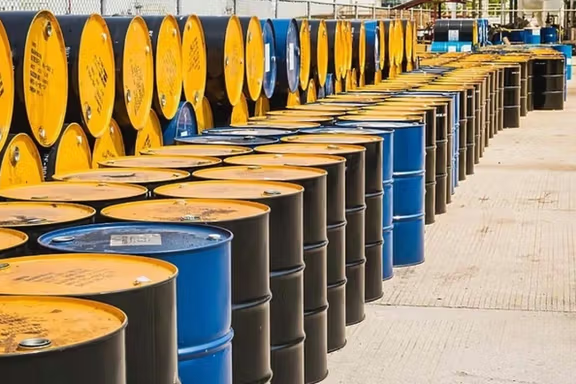Trump says China can buy Iranian oil, but can Iran deliver?

President Donald Trump's surprise remark—that China can now buy Iranian oil—made immediate headlines, but also raised a few eyebrows and fresh questions.

President Donald Trump's surprise remark—that China can now buy Iranian oil—made immediate headlines, but also raised a few eyebrows and fresh questions.
All US sanctions on Iranian oil remain firmly in place, and the President has offered no clarity on whether his comment marked a formal shift in policy or was simply a gesture of leniency.
A confidential report from Iran’s Oil Ministry, seen by Iran International, suggests that even if sanctions were lifted, Iran is no longer capable of significantly increasing exports.
Capacity eroded
Iran exported an average of 1.4 million barrels per day (bpd) of crude oil and gas condensate to China during the first half of 2025, According to exclusive data obtained by Iran International from commodity analytics firm Kpler.
That is a drop of 12 percent from last year.
In 2017, before US sanctions returned, Iran produced about 4.5 million bpd, exporting 2.5 million bpd and consuming the rest. But domestic consumption has surged, largely due to the expansion of refineries like the Persian Gulf Star.
By 2024, Iran was using over 2.4 million bpd, up 20 percent from 2017, leaving far less available for export.
A compounding factor is the age of Iranian oil fields.
About 80 percent of Iran’s oil comes from aging fields suffering from natural decline, producing about 10 percent less with each passing year.
Burning it all
While new fields have come online, oil and gas investment has dropped to under $3 billion per year, less than half of what it was a decade ago.
“Even if all US sanctions were lifted, Iran’s daily oil exports probably couldn’t exceed 1.7 million barrels per day, due to structural limits in both production and rising domestic consumption,”, senior energy analyst Homayoun Falakshahi told Iran International.
Iran also faces a growing domestic energy squeeze. Gas shortages are forcing it to burn more petroleum products and reducing export capacity even further.
Gasoline use in 2024 rose 7 percent, diesel by 16 and fuel oil (mazut) by 29, according to the same internal Oil Ministry report.
At the same time, China—Iran’s only consistent customer—is scaling back. Last month, exports to China fell to 1.1 million bpd. Projections show little improvement this month.
Floating storage—unsold oil at sea—has hit 40 million barrels. Iran continues to load roughly 1.5 million bpd, but more of it is sitting idle.
Impact uncertain
US sanctions have tightened in recent months, targeting tankers, refineries, and financial intermediaries.
China’s small, independent refiners are now Iran’s main buyers. But these low-efficiency plants rely on deep discounts and face rising pressure. Without those discounts, many may not survive.
Trump’s statement may have been intended as a diplomatic signal rather than a real policy shift. But Iran’s ability to capitalize is in serious doubt.
With underinvestment, surging domestic demand, and shrinking export margins, even full sanctions relief may not restore Iran’s oil exports to pre-2018 levels.
For a country long dependent on oil, hopes of a post-ceasefire boom may prove more symbolic than real.